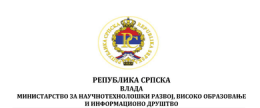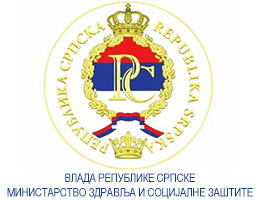Changes in Functional Abilities of Women Under the Influence of Recreational Swimming
Volume 6, Issue 1 (2016)
Volume 6, Issue 1 (2016)
Changes in Functional Abilities of Women Under the Influence of Recreational Swimming
Abstract:
The research was aimed at determining the changes in functional abilities of women under the influence of recreational swimming. The sampled population consisted of healthy women, aged 35 to 45, chronologically, with a dominant sedentary lifestyle. The assessment of functional ability was tested using the following variables: vital capacity, heart rate at rest, working heart rate, systolic blood pressure, diastolic blood pressure and relative oxygen consumption. Basic parameters of descriptive statistics were calculated for all the results, whereas the T-test was applied to determine the difference between the initial and final measurement. The results of the research showed that there were statistically significant changes of vital capacity after three months of recreational swimming (p = 0.000), heart rate at rest (p = 0.000) and relative oxygen consumption (p = 0.000). The research found that the programme of recreational swimming with sedentary middle-aged women can act effectively to change functional abilities.
Keywords:
recreation, recreational swimming, functional ability
Full Text:
References:
- Barbosa, T. M., Marinho, D. A., Reis, V. M., Silva, A. J., & Bragada, J. A. (2009). Physiological assessment of head-out aquatic exercises in healthy subjects: a qualitative review. Journal of Sports Science and Medicine, 179-189.
- Berger, B. G., & Owen, D. R. (1983). Mood Alteration with Swimming-Swimmers Really Do” Feel Better”. Psychosomatic medicine, 45(5), 425-433.
- Colado, J. C., Triplett, N. T., Tella, V., Saucedo, P., & Abellán, J. (2009). Effects of aquatic resistance training on health and fitness in postmenopausal women. European journal of applied physiology, 106(1), 113-122.
- Cox, K. L., Burke, V., Beilin, L. J., Derbyshire, A. J., Grove, J. R., Blanksby, B. A., & Puddey, I. B. (2008). Short and long-term adherence to swimming and walking programs in older women—the Sedentary Women Exercise Adherence Trial (SWEAT 2). Preventive medicine, 46(6), 511-517.
- Costill, D., Maglischo, E., & Richardson, A. (1992). Swimming: Handbook of Sports Medicine and Science Swimming. IOC Medical Commission Publications Advisory Committee.
- Fletcher, G. F., Balady, G., Blair, S. N., Blumenthal, J., Caspersen, C., Chaitman, B., ... & Pollock, M. L. (1996). Statement on exercise: Benefits and recommendations for physical activity programs for all Americans a statement for health professionals by the committee on exercise and cardiac rehabilitation of the council on clinical cardiology, American Heart Association. Circulation, 94(4), 857-862.
- Ferretti, E., De Angelis, S., Donati, G., & Torre, M. (2014). Fatal and non-fatal unintentional drownings in swimming pools in Italy: Epidemiological data derived from the public press in 2008–2012. Microchemical journal, 113, 64-68.
- Green, J. S. (1989). Effects of a Water Aerobics Program on the Blood Pressure, Percentage of Body Fat, Weight, and Resting Pulse Rate of Senior Citizens. Journal of Applied Gerontology, 8(1), 132-138.
- Khosravi, M., Tayebi, S. M., & Safari, H. (2013). Single and concurrent effects of endurance and resistance training on pulmonary function. Iranian journal of basic medical sciences, 16(4), 628.
- Lin, S. Y., Davey, R. C., & Cochrane, T. (2004). Community rehabilitation for older adults with osteoarthritis of the lower limb: a controlled clinical trial. Clinical Rehabilitation, 18(1), 92-101.
- Malacko, J., & Popović, D. (2001). Methodology of kinesiological and anthropological research. The third edition. Leposavić: Faculty of Physical Education, University of Priština.
- Martin, W. H., Montgomery, J. A. M. E. S., Snell, P. G., Corbett, J. R., Sokolov, J. J., Buckey, J. C., ... & Blomqvist, C. G. (1987). Cardiovascular adaptations to intense swim training in sedentary middle-aged men and women. Circulation, 75(2), 323-330.
- Mohr, M., Nordsborg, N. B., Lindenskov, A., Steinholm, H., Nielsen, H. P., Mortensen, J., ... & Krustrup, P. (2014). High-intensity intermittent swimming improves cardiovascular health status for women with mild hypertension. BioMed research international, 2014.
- Mikalački, M. (2005). Sports Recreation. Novi Sad: Faculty of Physical Education. [In Serbian]
- Minor, M. A., Webel, R. R., Kay, D. R., Hewett, J. E., & Anderson, S. K. (1989). Efficacy of physical conditioning exercise in patients with rheumatoid arthritis and osteoarthritis. Arthritis & Rheumatism, 32(11), 1396-1405.
- Nualnim, N., Parkhurst, K., Dhindsa, M., Tarumi, T., Vavrek, J., & Tanaka, H. (2012). Effects of swimming training on blood pressure and vascular function in adults> 50 years of age. The American journal of cardiology, 109(7), 1005-1010.
- Oja, P., & Tuxworth, B. (Eds.). (1995). Eurofit for adults: Assessment of health-related fitness. Council of Europe.
- Saavedra, J. M., De La Cruz, E., Escalante, Y., & Rodríguez, F. A. (2007). Influence of a medium-impact aquaerobic program on health-related quality of life and fitness level in healthy adult females. Journal of Sports Medicine and Physical Fitness, 47(4), 468.
- Schmid, J. P., Noveanu, M., Morger, C., Gaillet, R., Capoferri, M., Anderegg, M., & Saner, H. (2007). Influence of water immersion, water gymnastics and swimming on cardiac output in patients with heart failure. Heart, 93(6), 722-727.






